During the 19th century, Ilkley developed into a health resort. A visitors’ guide, of 1829, listed six boarding houses and three inns, among which was the Lister’s Arms, almost within touching distance of the former Hide Bar. The inn opened in 1825 and had its own brewhouse. It was originally called the New Inn, but soon became known as the Lister’s Arms after the first tenant, John Lister. The public house was sold in 1989, extended and converted into apartments.
Photographs and text about The Listers Arms.
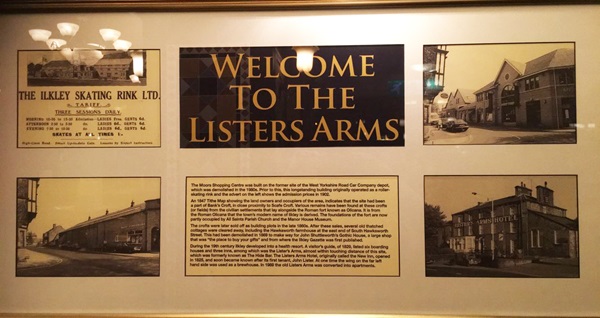
The text reads: The Moors Shopping Centre was built on the former site of the West Yorkshire Road Car Company depot, which was demolished in the 1960s. Prior to this, this longstanding building originally operated as a roller-skating rink and the advert on the left shows the admission prices in 1902.
An 1847 Tithe Map showing the land owners and occupiers of the area, indicates that the site had been a part of Bank’s Croft, in close proximity to Scafe Croft. Various remains have been found at these crofts (or fields) from the civilian settlements that lay alongside the Roman fort known as Olicana. It is from the Roman Olicana that the town’s modern name of Ilkley is derived. The foundations of the fort are now partly occupied by All Saints Parish Church and the Manor House Museum.
The crofts were later sold off as building plots in the late 1860s. After these sales, several old thatched cottages were cleared away, including the Hawksworth farmhouse at the east end of South Hawksworth Street. This had been demolished in 1869 to make way for John Shuttleworth’s Gothic House, a large shop that was “the place to buy your gifts” and from where the Ilkley Gazette was first published.
During the 19th century Ilkley developed into a health resort. A visitors guide, of 1829, listed six boarding houses and three inns, among which was the Lister’s Arms, almost within touching distance of this site, which was formerly known as The Hide Bar. The Listers Arms Hotel, originally called the New Inn, opened in 1825, and soon became known after its first tenant, John Lister. At one time the wing on the far left hand side was used as a brewhouse. In 1969 the old Listers Arms was converted into apartments.
A print and text about Ilkley Lido.
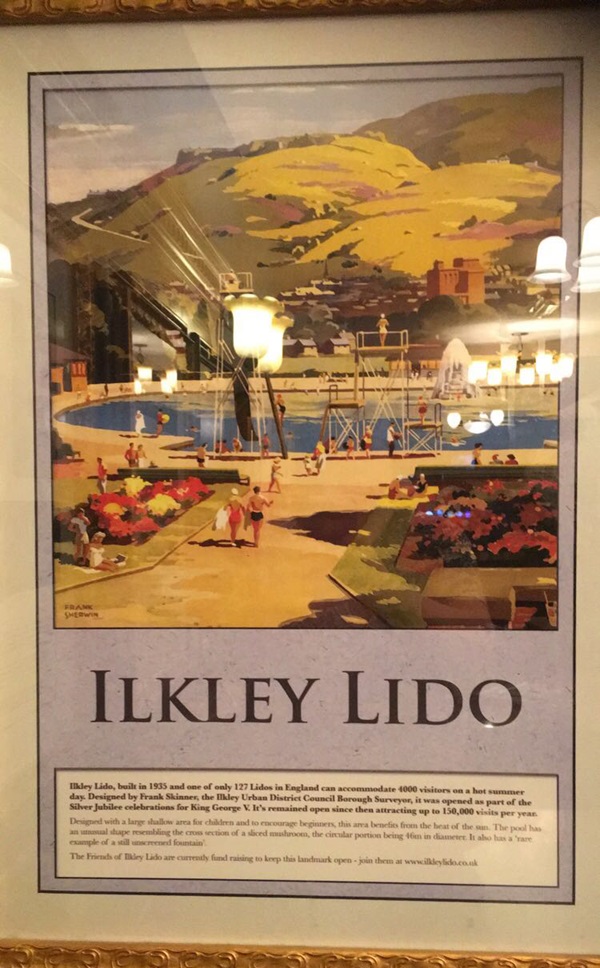
The text reads: Ilkley Lido, built in 1935 and one of only 127 Lidos in England can accommodate 4000 visitors on a hot summer day. Designed by Frank Skinner, the Ilkley Urban Council Borough Surveyor, it was opened as part of the Silver Jubilee celebrations for King George V. It’s remained open since then attracting up to 150,000 visitors per year.
Designed with a large shallow area for children and to encourage beginners, this area benefits from the heat of the sun. The pool has an unusual shape resembling the cross section of a sliced mushroom, the circular portion being 46cm in diameter. It also has a rare example of a still unscreened fountain.
The Friends of Ilkley Lido are currently fund raising to keep this landmark open – join them at www.ilkleylido.co.uk.
A photograph and text about Ilkley Toy Museum.
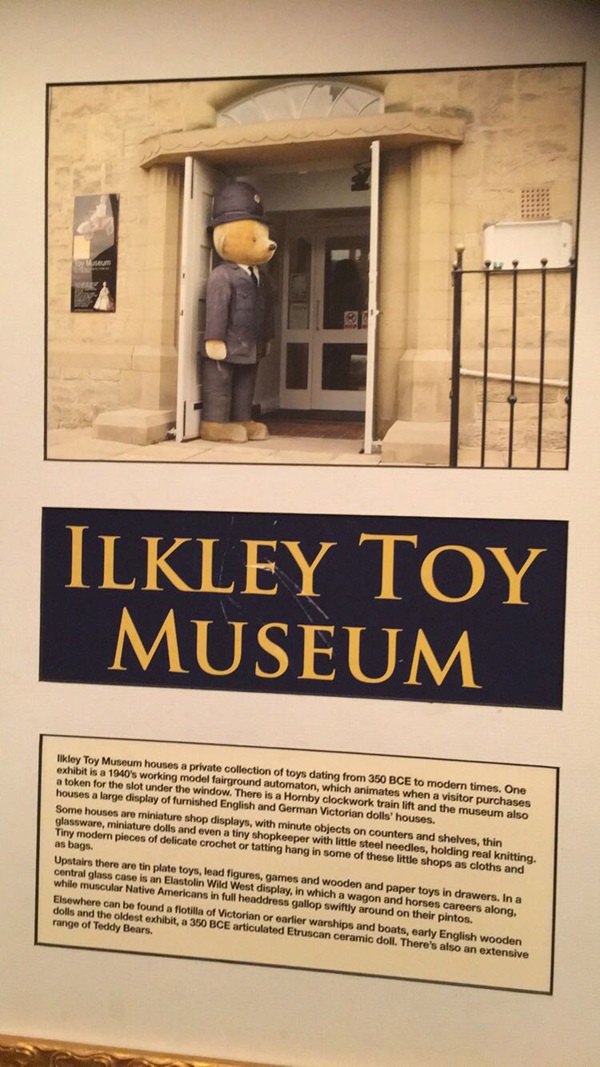
The text reads: Ilkley Toy Museum houses a private collection of toys dating form 350 BCE to modern times. One exhibit is a 1940s working model fairground automaton, which animates when a visitor purchases a token for the slot under the window. There is a Hornby clockwork train lift and the museum also houses a large display of furnished English and German Victorian dolls’ houses.
Some houses are miniature shop displays, with minute objects on counters and shelves, thin glassware, miniature dolls and even a tiny shopkeeper with little steel needles, holding real knitting. Tiny modern pieces of delicate crochet or tatting hang in some of these little shops as cloths and as bags.
Upstairs there are tin plate toys, lead figures, games and wooden and paper toys in drawers. In a central glass case is an Elastolin Wild West display, in which a wagon and horses careers along, while muscular Native Americans in full headdress gallop swiftly around on their pintos.
Elsewhere can be found a flotilla of Victorian or earlier warships and boats, early English wooden dolls and the oldest exhibit, a 350 BCE articulated Etruscan ceramic doll. There’s also an extensive range of Teddy Bears.
Photographs and text about the Beeching Axe.
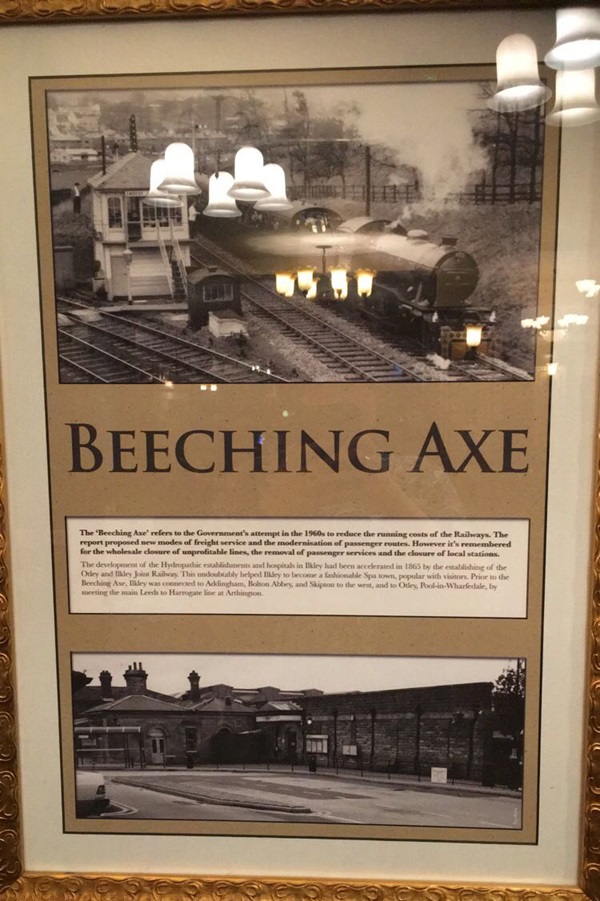
The text reads: The Beeching Axe refers to the Government’s attempt in the 1960s to reduce the running costs of the Railways. The report proposed new modes of freight service and the modernisation of passenger routes. However it’s remembered for the wholesale of closure of unprofitable lines, the removal of passenger services and the closure of local stations.
The development of the Hydropathic establishments and hospitals in Ilkley had been accelerated in 1863 by the establishing of the Otley and Ilkley Joint Railway. This undoubtedly helped Ilkley to become a fashionable Spa town, popular with visitors. Prior to the Beeching Axe, Ilkley was connected to Addingham, Bolton Abbey, and Skipton to the west, and to Otley, Pool-in-Wharfedale, by meeting the main Leeds to Harrogate line at Arthington.
Photographs and text about White Wells Spa.
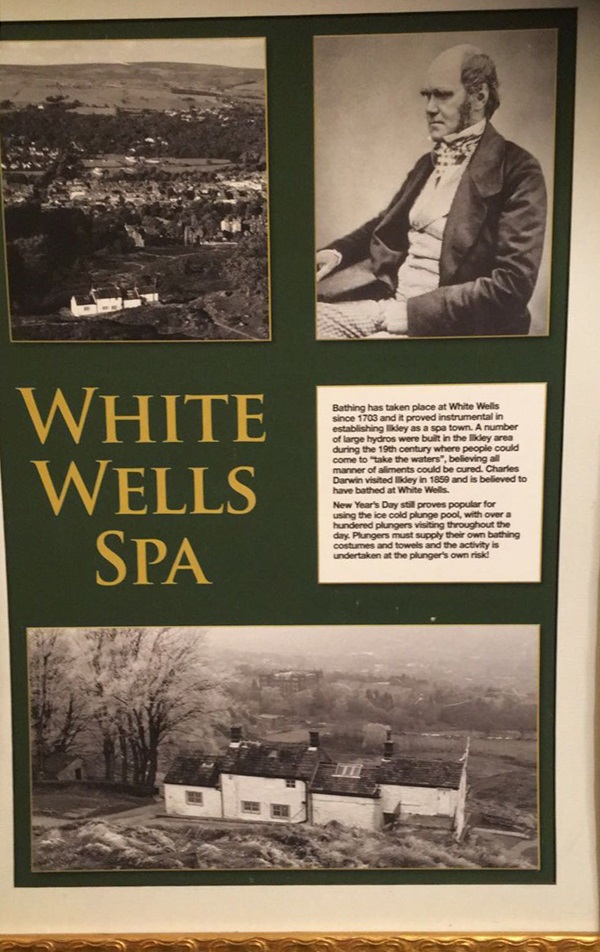
The text reads: Bathing has taken place at White Wells since 1703 and it proved instrumental in establishing Ilkley as a spa town. A number of large hydros were built in the Ilkley area during the 19th century where people could come to “take the waters”, believing all manner of aliments could be cured. Charles Darwin visited Ilkley in 1859 and is believed to have bathed at White Wells.
New Year’s Day still proves popular for using the ice cold plunge pool, with over a hundred plungers visiting throughout the day. Plungers must supply their own bathing costumes and towels and the activity is undertaken at the plunger’s own risk!
Photographs and text about the River Wharfe.
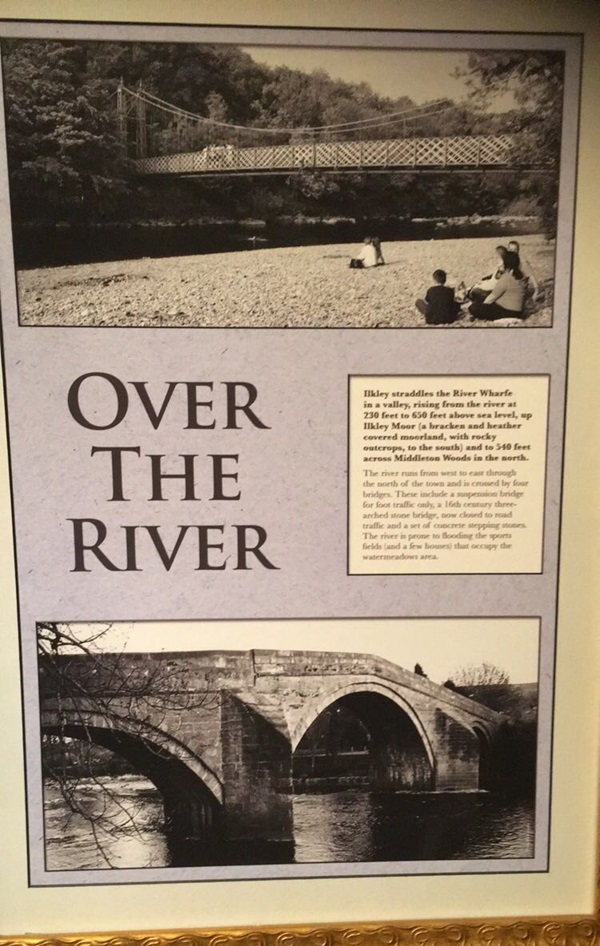
The text reads: Ilkley straddles the River Wharfe in a valley, rising from the river at 230 feet to 650 feet above sea level, up Ilkley Moor (a bracken and heather covered moorland, with rocky outcrops, to the south) and to 540 feet across Middleton Woods in the north.
The river runs from west to east through the north of the town and is crossed by four bridges. These include a suspension bridge for foot traffic only, a 16th century three-arched stone bridge, now closed to road traffic and a set of concrete stepping stones. The river is prone to flooding the sports fields (and a few houses) that occupy the watermeadows area.
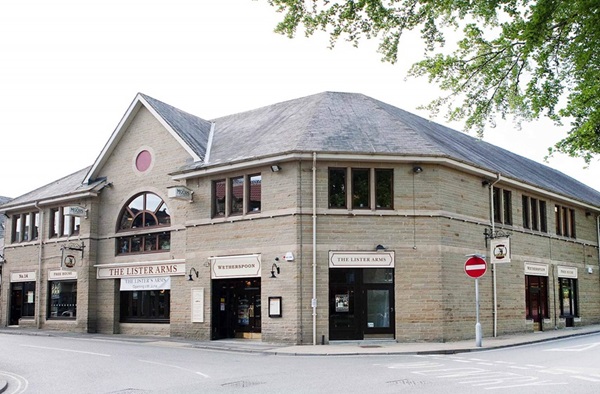
If you have information on the history of this pub, then we’d like you to share it with us. Please e-mail all information to: pubhistories@jdwetherspoon.co.uk